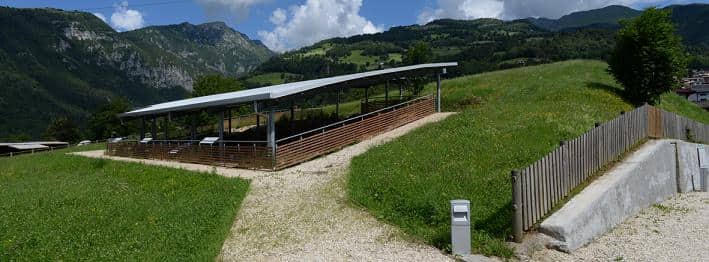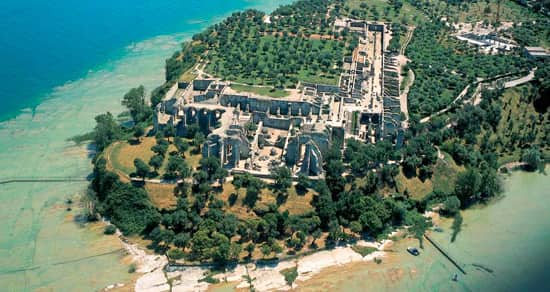When we talk about the Lombardy region, our thoughts immediately turn to the metropolitan cities, first of all Milan with its fashion, large buildings and entertainment. Or to the naturalistic beauties of this area, from lakes to mountains. But it should not be forgotten that this place boasts a very ancient past, even older than the Lombard period which gave the territory its name. Archaeological investigations have brought to light important sites ranging from the prehistoric age to the medieval one, obviously passing through the important Roman era.
So let's see the 5 most evocative archaeological sites in Lombardy:

The Archaeological Park and Antiquarium of Castelseprio (Varese)
.jpg)
The Archaeological Park includes, in a rich wooded setting, the remains of a castrum (ancient defensive structure) which developed in the 5th century. A.D. on military pre-existences of the IV century. AD, surrounded by turreted walls, which also defend part of the Monastery of Torba (FAI property). The Castrum and the village complex are among the UNESCO heritage sites.
The foundation of the castrum Sibrium seems to date back to the 4th-5th century for the defense against the great migrations of Germanic peoples. In addition to the remains of the Castrum, it is possible to visit the basilica of San Giovanni Evangelista used by the Lombards as a burial ground for local notables. Today only the ruins remain.
The farmhouse-convent of San Giovanni, built in the 14th century, housed a regular community. Inside, the walls of the oratory preserve late Renaissance and 17th century frescoes. The recently set up Antiquarium exhibits materials relating to prehistoric settlements up to the early Middle Ages.
Oppidum degli Orobi (Bergamo)

In the archaeological park of Oppidum degli Orobi it is possible to admire the remains of the ancient city of Parra, founded about 3200 years ago and inhabited until Roman times. The Roman author Plinio mentions it with the name of Parra Oromobiorum Oppidum. The discovery dates back to 1883 when a storage room full of bronze artifacts dating back to the 5th century BC was found in the Castello area. currently preserved in the Civic Archaeological Museum of Bergamo.
In 1983 traces of wall structures were found. In the subsequent excavation campaigns, an entire town founded in the late Bronze Age and then developed during the first and second Iron Age until the Roman conquest during the Augustan age was unearthed.
Walking through the archaeological park, it is possible to admire the remains of the houses dating back to the Iron Age and Roman times. The Antiquarium of Parre collects artifacts found during excavations such as pottery or the special jugs used in the Alps during protohistory.
The caves of Catullus (Brescia)

The archaeological area of the Grotte di Catullo preserves the remains of one of the largest residential villas in northern Italy. Located on the tip of the Sirmione peninsula, it dominates Lake Garda from above.
The villa occupies an area of about 2 hectares and is surrounded by a historic olive grove consisting of over 1500 plants.
Since the Renaissance the structures have been called "Grotte di Catullo" in honor of the Roman poet who mentions Sirmione as a jewel among all the islands and peninsulas of the seas and lakes.
The first scientific excavations of the site date back to the mid-nineteenth century. The most recent investigations have made it possible to date the villa to the Augustan age (last decades of the 1st century BC - early 1st century AD) and abandoned during the 3rd century AD. The olive grove surrounding the archaeological remains is made up of plants belonging to the traditional varieties grown on Lake Garda (Casaliva, Gargnà, Leccino), including some centuries-old specimens. Thanks to the care given in recent years, the olive grove has returned to producing olives from which an excellent quality extra virgin oil is extracted.
The Roman Villa of Palazzo Pignano (Cremona)
.jpg)
The villa is located near the ancient Pieve di San Martino (from the Romanesque period). The large archaeological area has not yet been fully investigated: two parts have in fact been excavated, one closer to the church (to the west) and one further away (to the east). The one to the west is made up of numerous rooms with original shapes placed around an octagonal garden surrounded by a portico called the peristyle.
The villa had floors with colored mosaics, painted walls, hot air heating and glass on the windows, while the large octagonal garden was probably decorated with marble statues, some dating back to the imperial age.
The owner was Piniano Valerio Severo, from a noble family, whose ancestors had held prestigious political positions from time immemorial. In 403, Piniano and his wife, pushed by the advice of St. Augustine, decided to sell their assets and move to Jerusalem where they built monasteries. The complex can still be visited and consists of the Roman archaeological area, the beautiful medieval church and the Antiquarium.
The National Archaeological Park of the Boulders of Cemmo (Brescia)

The rich heritage of rock art of Valcamonica extends in over 180 locations in 24 different municipalities, which preserve a heritage of inestimable historical value, consisting of over 2,000 rocks and nearly 300,000 engravings.
The discovery of the first historiated boulders (i.e. with engravings) took place in 1909 in Cemmo. More recent archaeological excavations have brought to light a megalithic sanctuary, dating back to the Copper Age.
Some votive steles relating to this area remained in use until the late Roman period when the advent of Christianity put an end to the ancient cults. In this period, the Pieve di San Siro was built not far from the area.
These are just some of the examples of an archaeological park in Lombardy. All these sites can be visited, some even for free, and offer a thorough look at the past and history of this area.
About the author
Written on 18/11/2020



Maria Luisa Ancona
Lombardia is not just Milan, big cities and naturalistic beauties. This region boasts a past that begins even in prehistoric times. And this past can still be seen in the numerous archaeological parks that populate this area. These sites have been museumized and are currently open to visitors.